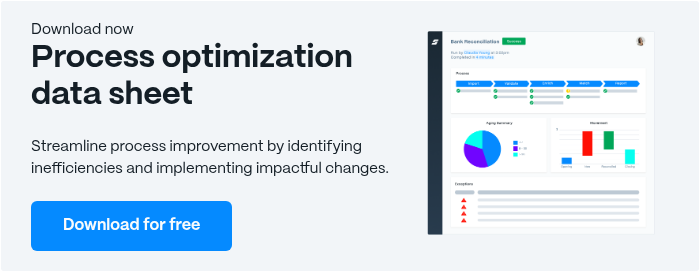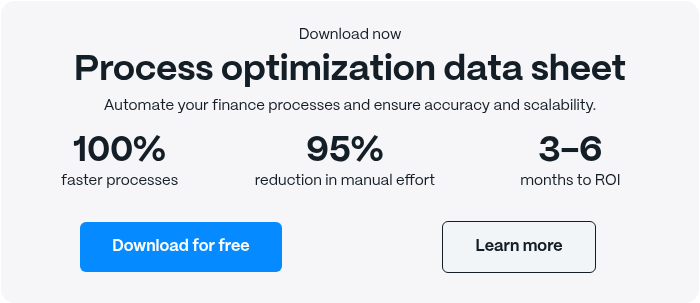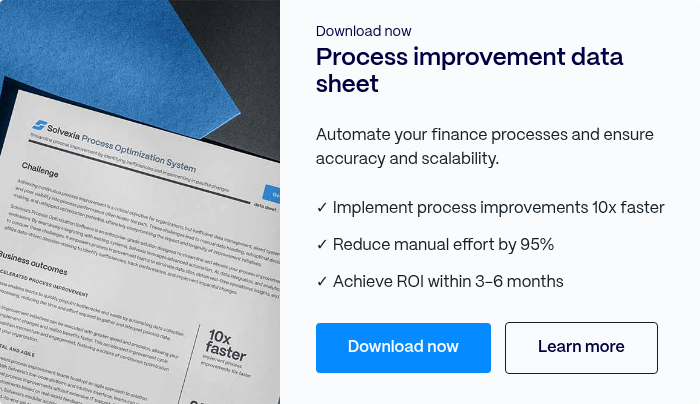5 Performance Objectives to Transform Business

A running thread through successful enterprises is the ability and progress of its people. By setting up performance objectives, employers and employees can align expectations and be on the same page as to how performance will be monitored.
We will break down everything you need to know about how to transform your business using performance objectives, from defining the term to ways to overcome challenges that you may face along the way.

Coming Up
1. What Are Performance Objectives?
2. Performance Objectives: In Business
3. Performance Objectives: Key Terms
7. Examples & Elements of Performance Objectives
8. Steps to Better Performance Objectives
9. Performance Objectives are Key
What Are Performance Objectives?
Performance objectives are goals that employers define for employees to help achieve business goals. The purpose of communicating these objectives to employees is so that employees can understand how their responsibilities and actions affect the overall business. Furthermore, employers have a go-to guide as to how to assess an employee’s work at any given time.
When employees and employers discuss and outline key performance objectives, it allows employees to gain a sense of ownership over their work. Once thep personal KPIs have been established, the next step is to use them to prioritise work and assess performance. In most cases, business leaders and managers will have check-ins to review an employee’s performance on a monthly, quarterly or annual basis. Upon meeting to review progress, having the performance objectives already outlined makes it easy to remain objective and provide actionable recommendations.
As such, it’s a best practice to design objectives to be SMART, which means they are: smart, measurable, achievable, relevant and time-bound. Knowing what a performance objective is not is as important as knowing what it is. They are not meant to be tasks, or specific job description bullets. Instead, an employee conducts work activities, or actions they do when performing a job. The performance objective is a definition of the outcome of said work activity.
Performance Objectives: In Business
Performance objectives can be used for employees in any department within your organisation. Here’s a look at some examples based on department:
- Strategy: Can create a loyalty program to boost customer retention to satisfy stakeholders. Some ways to measure include: delivery on time and the percentage increase in loyalty card membership over any desired measurement of time.
- Project Management: Used in most businesses, project management is key to ensure projects are completed in their expected timeframe. Can look at these performance objectives to measure: budget variance, schedule variance, stakeholder acceptance.
- Graphic Design: Even creative departments can find ways to measure their success. For example, when a graphic design project is complete, send out a client satisfaction survey to quantify the outcome.
- Sales: Measure the ability to meet sales goals, i.e. monthly recurring revenue.
- Customer Service: The bread and butter of any business is the ability to satisfy clients. Customer service can be assessed with a measurement like the percentage of claim tickets resolved on the first attempt.
- Marketing: Work with the product development teams to help boost product sales. Performance objectives include: the amount of new product launches and percentage increase in subscriptions, for example.
- Finance: From providing department’s with analytical support, budget recommendations and forecasts, finance teams drive businesses forward. Measurement can be in terms of meeting revenue goals, having low variances and getting paid for invoices in a timely manner.
Performance Objectives: Key Terms
There are some key terms that can help when outlining and communicating objectives between managers and employees.
- Goal vs. Objective: A goal represents a desired outcome and the objective is the action taken to achieve the goal.
- Measurable Goals: The SMART criteria for setting goals stands for: specific, measurable, achievable, relevant, time bound. To design a measurable goal, you want to be able to track progress in order to boost motivation. Measurable goals answer the questions of how many, how much and how do I know when the goal is met?
- Goal Setting Process: Goal setting covers five steps, namely - defining what you want, finding congruence, checking the environment, developing a blueprint and creating a plan of action.
- Metrics: Metrics is a way to measure something and can be applied to marketing metrics, finance metrics, etc.
- Metrics vs. Measurements: A metric is a calculation between two measures, whereas a measure is a number that comes from taking a measurement.
- Data-Driven Business: Data-driven businesses utilise data to make decisions, improve processes and possibly adjust the business model. By leveraging technology and automation solutions, a business can easily become a data-driven business as the system is designed to collect, transform and monitor data.
- Labor Productivity: Labor productivity is a calculation to measure employee productivity, which can be calculated by dividing total output/total input.
- Cost Effectiveness: Cost effectiveness is an economic analysis that analyses relative costs to outcomes from different courses of actions. Unlike cost-benefit analysis, the effect is not assigned a monetary value.
5 Performance Objectives
Let’s take a look at five key performance objectives.
#1 Quality
Customers, employees and stakeholders look for quality in a product and/or service. It’s one of the primary attributes of what makes a customer value what your business offers, and in turn, helps to reduce turnover. This means that your business offering must be consistent and meet the standards and expectations every time. By focusing on quality, organisations can help to eliminate waste, better satisfy customers and boost growth potential. One simple way to ensure quality outputs is to automate and standardise processes.
#2 Speed
Speed refers to the turn-around time between customer contact and business reply. Whether it’s the speed of delivering a tangible good or resolving a customer complaint, it can make or break a business and its reputation. It’s also a way to differentiate your business from the competition. Given equal quality, the faster to market provider will win every time! Automation tools help to eliminate bottlenecks, alert employees of potential problems in advance, and produce results in a timely manner.
#3 Dependability
Dependability comes down to being reliable and trusted by your customers. When a client knows what to expect and that said product or service will be delivered as promised, they are more likely to return and recommend your offering to others. It’s a key measurement as a performance objective because it helps to ensure that employees are aligned with overall business objectives. Automation tools can aid in ensuring a dependable service because you can leverage big data to track progress and assess KPIs in real-time.
#4 Flexibility
Markets and customers’ needs change on the fly. It’s up to a business to be able to remain flexible and adaptive to meet such changing needs. There are many ways to remain flexible, including: offering new products and features, expanding your current product’s capabilities, changing the delivery speed or timing of an outcome, etc. With flexibility, you can gain competitive edge. To remain flexible, you can leverage an adaptive operational mindset. For starters, implementing a software solution to automate processes and track KPIs can help. For example, you may notice that reports are not being submitted by deadlines, which could signal a bottleneck in an approval process. You can apply technical resolutions to shift the service back on track while mitigating risks.
#5 Cost
Naturally, customers may choose one product over another because of cost. It’s up to you as CFO to help find ways to minimise costs and maximise profits. Optimising your operations and processes can contribute greatly to lower costs. This way, customers can still trust your business to deliver dependable, timely, flexible, and quality products, without having to overpay. With automation tools, you can help to maximise productivity, which in turn, will lower costs. You can also decrease errors through automation, which then saves on the cost of fixing those errors.
Performance Goal-Setting
Performance goal-setting is an important step that helps employees achieve the desired outcomes. It’s all too often that business executives and managers set goals and leave an employee’s review to occur annually, without having the status check-ins throughout the year. However, these goals should remain at the top employees’ minds. They can play a role in boosting overall productivity, morale and job satisfaction. This is especially true when you celebrate milestones such as meeting or exceeding their goals.
Goal-setting benefits employees by:
- Enabling them to develop skills that will help them do their job to the best of their abilities
- Advancing the organisation’s mission and principles
- Working alongside colleagues at a higher capacity because everyone is aware of each other’s purpose
- Implementing successful projects and be willing to share ideas for new initiatives
- Producing resilience when challenges arise and providing them with ways to learn from challenges
Dealing with Roadblocks
You deal with your fair share of challenges on a daily basis. Having an employee that’s not meeting performance objectives shouldn’t have to be another one. Still, roadblocks are bound to occur, so consider asking employees the following questions to help overcome stagnation or inefficiency:
- How did the roadblock occur?
- What has been done to overcome the issue?
- Does the goal need to change?
- If you can’t progress, what will the consequence or risk be?
- What do you have control over to help resolve the problem?
Importantly, also try to find out if they are lacking any resources to complete their job and meet their goals.

Examples & Elements of Performance Objectives
SMART performance objectives can be categorised into the following buckets:
Customer-focused: There are specific actions that employees must do to take care of customers. For starters, customer service begins by showing up. One way to measure an employee’s ability to meet customer’s needs is to track their attendance to work. Another way to quantify success in this realm is to keep track of customer complaints, as well as the total number of times an employee interacts with a customer.
Financially-focused: Financially-focused performance objectives may be one of the easiest to measure. This is because they are inherently quantifiable. For example, if your overall business goal is to reduce costs, you can track cost centre goals and new supplier contracts.
Employee-growth: To keep an employee satisfied and producing at maximum capacity, it’s worthwhile to invest in employee-growth opportunities. This could include continuing education, for example. If an employee is in a position that requires a license or certificate to advance, then you can measure their success by obtaining the certificate, as well as setting a goal to do so in a certain amount of time.
Steps to Better Performance Objectives
There are some best practices and steps you can rely on to create well-designed performance objectives. These include:
- Share goals: Employees must be a part of the discussion and be made aware of what their performance objectives are so that they can do the correct work to achieve them.
- Include different objectives: Including different types of objectives allows employees to play to their strengths and remedy their weaknesses. If it’s a long list of the same type of objectives, it could become unmotivating.
- Set employees up for success: Provide them with the necessary resources they need to perform at their best. Not only does this mean implementing the right technological solutions, but it can also come in the form of moral support and mentorship. Of course, good leadership never goes unnoticed.
Use SMART technique: Use the SMART technique as it’s easy to comprehend and it can help to align objectives to the business goals.
- Specific well-defined criteria for assessment and effective planning
- Measurable with metrics to quantify success or failure
- Achievable and attainable goals that are agreed upon
- Relevant, realistic, and within reach
- Time bound as there’s a specific expectation in terms of when the goal should be reached
Performance Objectives are Key
When driving your organisation toward its most optimal state, you’ll need every person on your team to function at their best. Performance objectives are a primary method to help align your employees with your business goals. The process of defining, measuring and assessing performance objectives can also aid in finding inefficiencies in what could otherwise remain as an obscure place.
Automation tools can help your team achieve and exceed its goals. The software boosts efficiency, productivity and employee satisfaction. With the right tool in place, your team members will have what they need to stay on track, which means everyone reaps the rewards.
FAQ
Intelligent reconciliation solution
Intelligent rebate management solution
Intelligent financial automation solution
Intelligent Financial Automation Solution
Intelligent financial automation solution
Intelligent financial automation solution
Intelligent financial automation solution
Intelligent financial automation solution
Intelligent regulatory reporting solution
Free up time and reduce errors
Recommended for you

Request a Demo
Book a 30-minute call to see how our intelligent software can give you more insights and control over your data and reporting.

Reconciliation Data Sheet
Download our data sheet to learn how to automate your reconciliations for increased accuracy, speed and control.

Regulatory Reporting Data Sheet
Download our data sheet to learn how you can prepare, validate and submit regulatory returns 10x faster with automation.

Financial Automation Data Sheet
Download our data sheet to learn how you can run your processes up to 100x faster and with 98% fewer errors.

Financial Automation Data Sheet
Download our data sheet to learn how you can run your processes up to 100x faster and with 98% fewer errors.

Financial Automation Data Sheet
Download our data sheet to learn how you can run your processes up to 100x faster and with 98% fewer errors.

Financial Automation Data Sheet
Download our data sheet to learn how you can run your processes up to 100x faster and with 98% fewer errors.

Financial Automation Data Sheet
Download our data sheet to learn how you can run your processes up to 100x faster and with 98% fewer errors.

Financial Automation Data Sheet
Download our data sheet to learn how you can run your processes up to 100x faster and with 98% fewer errors.

Rebate Management Data Sheet
Download our data sheet to learn how you can manage complex vendor and customer rebates and commission reporting at scale.

Top 10 Automation Challenges for CFOs
Learn how you can avoid and overcome the biggest challenges facing CFOs who want to automate.
.svg)









